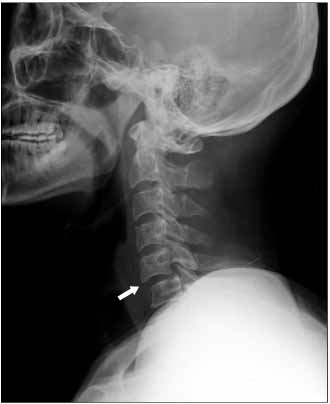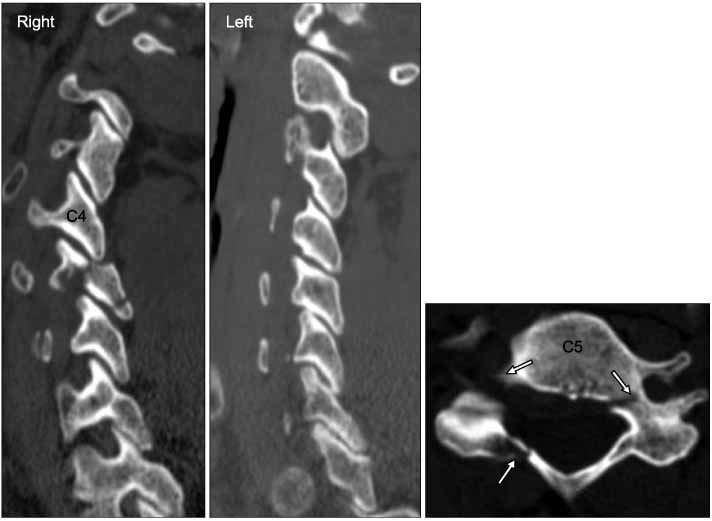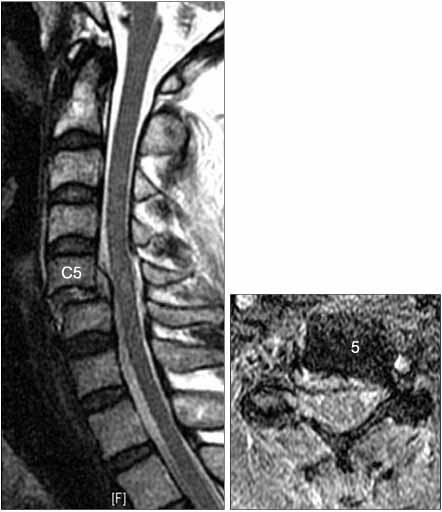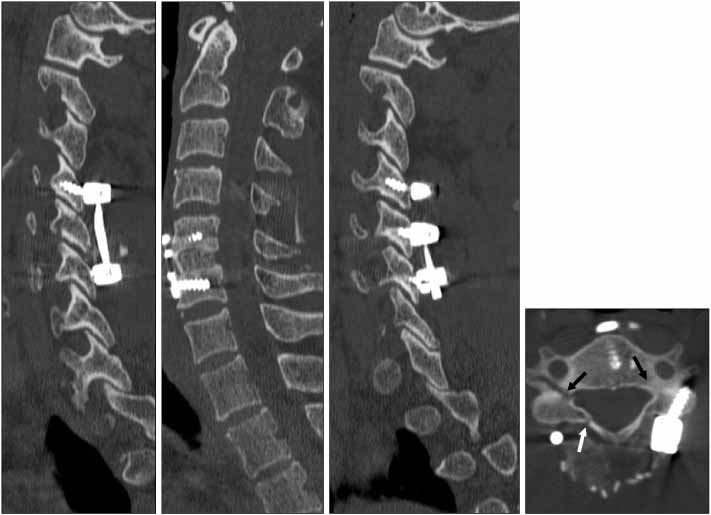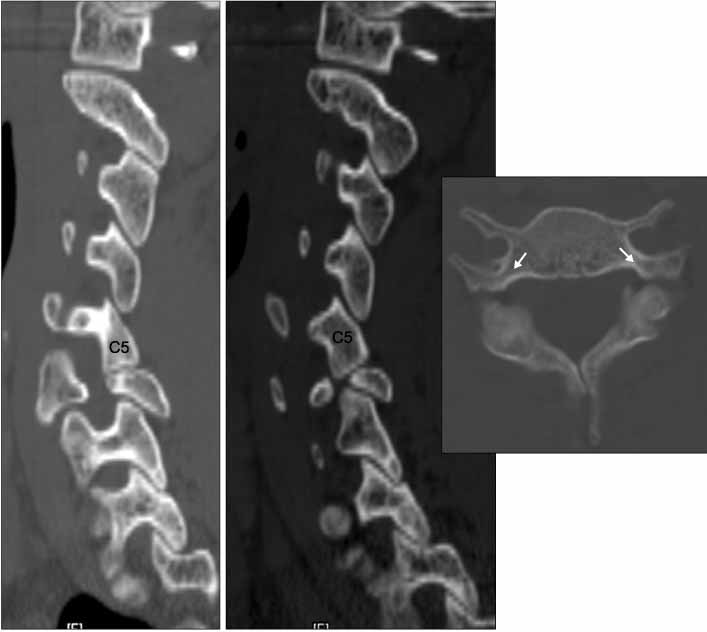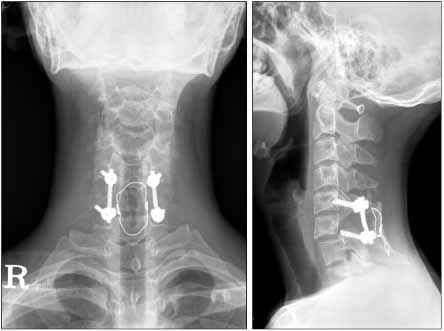J Korean Orthop Assoc.
2008 Jun;43(3):385-390. 10.4055/jkoa.2008.43.3.385.
Compressive-Extension Stage 4 Injury in Cervical Spine is Theoretical Stage?: Case Reports
- Affiliations
-
- 1Department of Orthopedic Surgery, College of Medicine, Kyung Hee University, Seoul, Korea. sks111@khmc.or.kr
- KMID: 2186457
- DOI: http://doi.org/10.4055/jkoa.2008.43.3.385
Abstract
- A compressive-Extension Stage 4 (CES4) injury consists of a bilateral disruption of the articular pillars (pedicle, facet and/or lamina) with the partial forward subluxation of the fractured vertebra on the vertebra below. A CES 4 injury is considered to be the theoretical stage and has never been reported. The authors encountered two cases of a CES 4 injury and report the radiographic findings and surgical treatment of this injury.
MeSH Terms
Figure
Reference
-
1. Allen BL Jr, Ferguson RL, Lehman TR, O'Brien RP. A mechanistic classification of closed, indirect fractures and dislocations of the lower cervical spine. Spine. 1982. 7:1–27.
Article2. Bohlman HH. Acute fractures and dislocations of the cervical spine. An analysis of three hundred hospitalized patients and review of the literature. J Bone Joint Surg Am. 1979. 61:1119–1142.
Article3. Forsyth HF. Extension injuries of the cervical spine. J Bone Joint Surg Am. 1964. 46:1792–1797.
Article4. Fuentes JM, Benezech J, Lussiez B, Vlahovitch B. Fracture-separation of the articular process of the lower cervical spine. Its relation to fracture-dislocation in hyperextension. Rev Chir Orthop Reparatrice Appar Mot. 1986. 72:435–440.
- Full Text Links
- Actions
-
Cited
- CITED
-
- Close
- Share
- Similar articles
-
- Relationship between Soft Tissue Damages and Spinal Cord Injury in Lower Cervical Spine Trauma
- Delayed or Missed Diagnosis of Cervical Instability after Traumatic Injury: Usefulness of Dynamic Flexion and Extension Radiographs
- Squamous Cell Carcinoma of the Cervix with Intraepithelial Extension to the Endometrium: A Case Report
- Soft Tissue Damage in Cervical Spine Extension Injury
- A Clinical Analysis of Traumatic Cervical Spine Injuries

